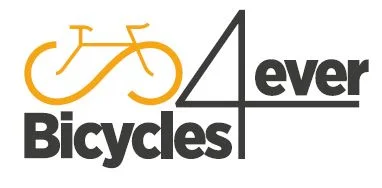How To Shift Your Gears Correctly with GCN
Source: GCN Youtube Channel: How To Shift Your Gears Correctly
Video How To Shift Your Gears Correctly with Global Cycling Network
Video How To Shift Your Gears Correctly with Global Cycling Network YouTube Channel.
How To Shift Your Gears Correctly
Headline: Mastering Gear Changing Skills: A Complete Guide for Cyclists
Introduction
Cycling is a fantastic sport and an excellent way to stay fit and active. However, if you’re not getting the most out of your gears, you might be missing out on the full potential of your ride. In this article, we will explore the ins and outs of gear changing, providing you with valuable tips and techniques to help you maximize your cycling experience.
Understanding the Gears
To begin with, understanding your bike’s gears is essential. Your right-hand shifter controls the gears at the back, while the left-hand shifter controls the front gears. The front chainrings consist of a big ring and a little ring, each serving a different purpose. The big chainring is for harder gears, while the little chainring is for easier gears. Additionally, the rear cassettes have smaller cogs for hard gears and larger cogs for easier riding. The speed of the cassette and the gear ratios play a crucial role in determining the efficiency of your ride.
Finding Your Cadence
One of the most important aspects of effective gear changing is finding your cadence. Cadence refers to the revolutions per minute of your legs when pedaling. An optimal cadence is typically between 80 to 95 revolutions per minute. Finding the right cadence for your riding style and personal preference is crucial for efficient gear changing and improved overall performance.
Anticipating Gear Changes
Anticipating when to change gears is a skill that can greatly enhance your cycling experience. By preparing and gradually adjusting your gears before hitting a steep climb, you can ensure that you’re in the right gear to tackle the ascent efficiently. Additionally, keeping an eye out for changes in terrain and adapting your gear changes accordingly will help maintain a smooth and consistent cadence.
Adapting to Changing Terrains
In reality, roads vary in gradient and slope, and adjusting your gear changes to accommodate these changes is essential. Making small gear changes to keep a consistent cadence will help you maintain your rhythm and avoid losing momentum on challenging terrains. It’s vital to adapt your gear changes to match the terrain and stay in control of your ride.
Balancing Gear Changes
While it’s important to change gears according to the terrain, it’s equally crucial not to overthink and change gears too frequently. At times, pushing through the effort and sticking to a gear can help you maintain power and pace, especially when tackling smaller climbs. Finding the balance between efficient gear changes and maintaining power output is key to a successful ride.
Smooth Gear Changes
Smooth gear changes are essential for a seamless and comfortable ride. Releasing a slight amount of pressure on the pedals when changing gears can make a significant difference in the smoothness of your gear changes. Avoiding cross-chaining, where the chain is at a severe angle, is also important to prevent damage to your bike’s components and ensure a smooth gear change.
Wrapping Up
In conclusion, mastering gear changing skills is essential for cyclists to maximize their riding experience. By understanding the gears, finding your cadence, anticipating gear changes, adapting to different terrains, balancing gear changes, and ensuring smooth gear changes, you can elevate your cycling performance and enjoy a more efficient and enjoyable ride.
Conclusion
By implementing the tips and techniques outlined in this article, cyclists can enhance their gear changing skills and elevate their overall riding experience. Whether you’re a beginner or an experienced rider, mastering the art of gear changing will undoubtedly improve your performance and make cycling even more enjoyable. Remember to practice these techniques and find what works best for you, and you’ll soon be changing gears like a pro.
The opinions expressed in this space are the sole responsibility of the YouTube Channel Global Cycling Network and do not necessarily represent the views of CicloNews.

